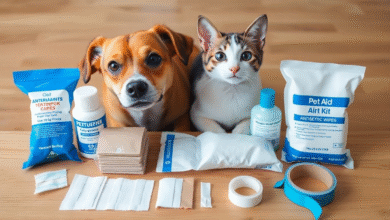Live-in Care and Pets: Keeping Companions Together at Home

For many people, pets are more than animals—they’re family. From wagging tails to soft purrs, pets offer comfort, friendship, and a sense of routine. In live-in care, recognising the importance of these relationships is essential. Keeping someone at home with their pet can have huge benefits for their emotional well-being, especially during times of illness or reduced independence.
Live-in care allows people to stay in their own surroundings, and for pet owners, that includes staying with their animal companions. Rather than moving into a care home where pets may not be allowed, live-in care supports both the person and their pet in familiar surroundings.
Why Pets Matter in Later Life
Older adults often face loneliness or isolation. A pet provides a reliable source of company, affection, and purpose. Feeding a cat, walking a dog, or simply stroking a rabbit offers a sense of routine and comfort. Several studies by recognised UK charities, such as the PDSA and Age UK, confirm that pet ownership is associated with reduced feelings of loneliness and improved mental health among older people.
Pets can also help reduce anxiety, especially for those with dementia or other memory conditions. The presence of a familiar pet can be calming and may even help spark memories or conversation. Live-in carers often witness these moments—where a person lights up when their pet curls up beside them or greets them in the morning.
The Role of the Carer
When someone has a live-in carer, part of that role can include helping with pet care. This might involve feeding the pet, cleaning up after them, or taking them for short walks. However, care is always personalised—what’s included will depend on the person’s needs and what has been agreed as part of their care plan.
Some care providers, such as Agincare, are known for adapting their services to include pet care where possible. Their focus on personal care in familiar settings means that, if it’s important to the person to keep their pet, every effort is made to support that.
It’s also about supporting independence. Where possible, the carer encourages the person to take part in pet care activities—like brushing a dog or feeding a cat. These small tasks help maintain a sense of purpose and involvement in daily life.
Supporting Pet Ownership Safely
Of course, caring for a pet must be done safely. If someone has limited mobility, a strong or energetic dog could be a risk. In those cases, a plan is needed to ensure both the pet and the person are safe. This might mean arranging for a dog walker or having the carer assist with walks.
It’s also important to ensure that pets are healthy. Live-in carers might help book and attend vet appointments or make sure vaccinations and treatments are up to date. Some families also get help from local pet services or charities to support ongoing care.
Training and Confidence for Carers
If you’re thinking about healthcare careers, it’s worth knowing that live-in care roles can include a wide range of duties—including occasional help with pets. Having confidence around animals and understanding their needs is an extra skill that many carers find rewarding.
Training for care work now often includes modules on personalised care, and carers are encouraged to see the whole picture of someone’s life—including their relationships with animals. There are also useful resources like this care training guide that offer clear insights into responsibilities and how to support people in different living situations.
Emotional Benefits for Families Too
Families are often reassured to know that their loved one can stay at home, surrounded by the things and companions they love. In many cases, it’s the pet that keeps someone motivated, moving, and mentally engaged. The idea of going into care without their pet can be very upsetting, and live-in care removes that barrier.
It also supports continuity. Pets are creatures of habit, too. Staying in the same home, with the same smells and spaces, is good for their well-being. When both the person and pet are supported, the results are usually calmer, happier households.
Live-in Care: A Flexible Option for Pet Owners
Live in care stands out because of its flexibility. While care homes have to consider shared spaces and other residents’ allergies or fears, live-in care is built around one person and their preferences. If keeping a pet is important, the care plan can include that from the start.
Of course, there are practical considerations. Large animals or those with high needs may not be suitable in every case. But small pets—like cats, dogs, or birds—can often remain part of the home with the right support.
The Bigger Picture
As more people choose to age at home, the role of live-in carers becomes more varied. It’s not only about helping with washing, dressing, and meals. It’s about understanding what matters most to the person—and that often includes pets.
Technology can also play a small role. Video calls can include the pet, helping families stay connected. Some carers even send daily pet updates to relatives, which can be a lovely way to share those simple, happy moments.
With the right support, pets and their owners can stay together through life’s later stages. Live-in care helps make that possible—offering support that fits the person, their routines, and their furry (or feathered) friends.




